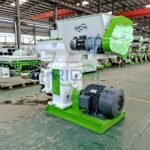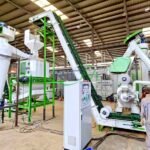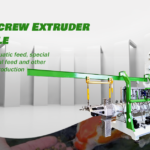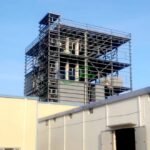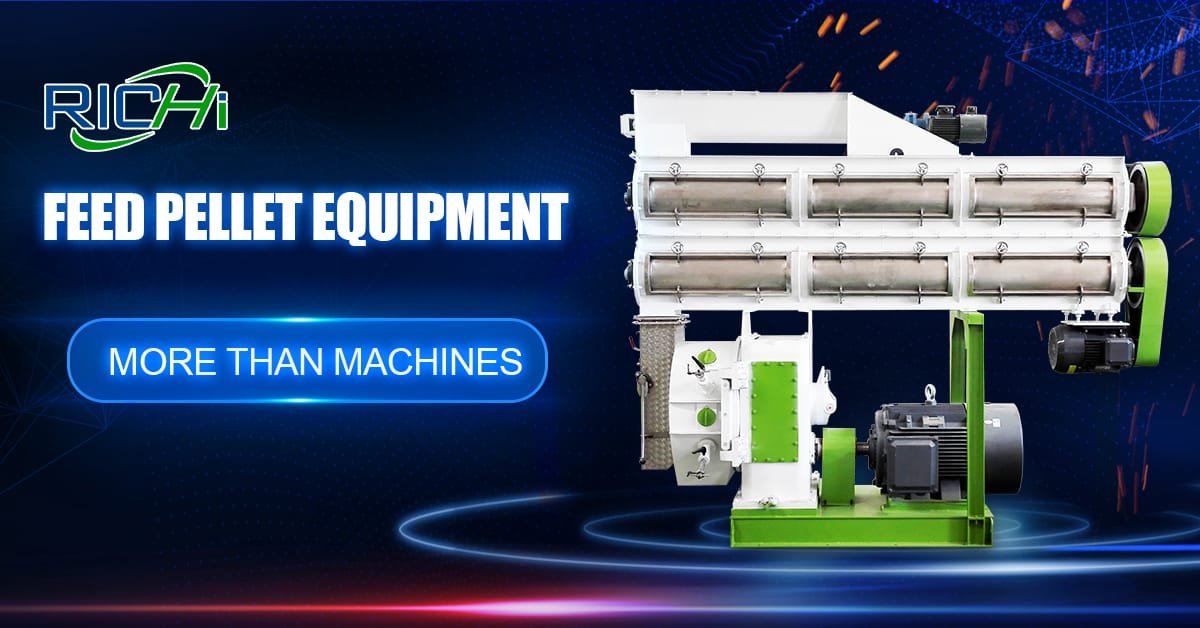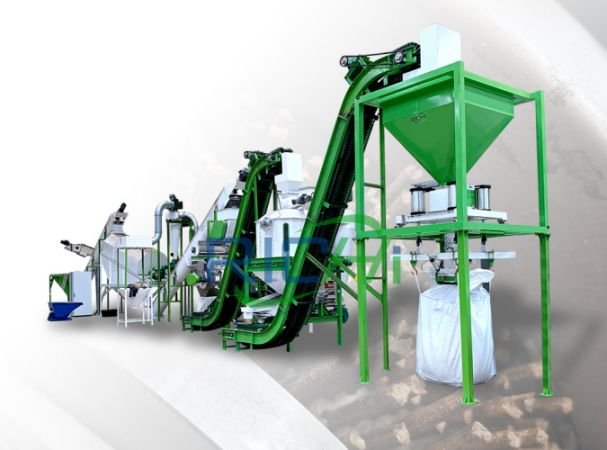Choosing the correct feed mill pellet machine is a critical decision for any animal feed factory. The right machine can significantly enhance production efficiency, improve feed quality, and contribute to overall operational success. This comprehensive guide will walk you through key factors to consider when selecting a feed mill pellet machine, ensuring an informed decision that aligns with your factory’s needs and goals.
1. Understand Your Production Requirements
Before diving into machine specifications, it’s crucial to have a clear understanding of your production needs:
- Production Capacity: Determine the required output in tons per hour or day, considering both current needs and potential future expansion.
- Types of Feed: Identify the various types of animal feed you plan to produce (e.g., poultry, cattle, swine, aquaculture). Different feeds may require specific pellet sizes and formulations.
- Raw Materials: List the primary ingredients you’ll use and consider their moisture content and hardness, as these factors impact the pelletizing process.
2. Evaluate Pellet Machine Types
There are primarily two types of pellet machines used in feed mills:
- Ring Die Pellet Mills: Suitable for large-scale production, these mills offer high efficiency and consistent pellet quality. While generally more expensive, they provide better long-term value for high-volume operations.
- Flat Die Pellet Mills: More suitable for smaller operations or specialized feed production, these mills are often more affordable and easier to maintain. They may offer more flexibility in pellet size and shape.
Consider which type best aligns with your production scale and specific feed requirements.
Related post: https://www.richipelletmachine.com/ring-die-pellet-machine/
3. Assess Machine Specifications
Once you’ve determined the type of machine, focus on these key specifications:
- Die Size and Configuration: The die size affects production capacity and pellet quality. Larger dies generally offer higher production rates but may require more power.
- Motor Power: Ensure the motor power is sufficient for your production needs, as higher power allows for processing harder materials and higher throughput.
- Roller Configuration: The number and design of rollers impact pellet quality and production efficiency. Some machines offer adjustable roller settings for different materials.
- Pellet Size Options: Verify that the machine can produce the pellet sizes required for your feed types. Some machines offer interchangeable dies for different pellet sizes.
4. Consider Material Handling and Pre-processing
A pellet machine is part of a larger system. Consider how it will integrate with:
- Grinding Equipment: Ensure compatibility with your existing or planned grinding systems, as some pellet machines may require specific particle sizes for optimal performance.
- Mixing Systems: Consider how the pellet machine will integrate with your mixing equipment. Some advanced systems offer integrated mixing and pelleting solutions.
- Cooling and Drying Systems: Evaluate the need for post-pelleting cooling and drying equipment. Some pellet machines come with integrated or compatible cooling systems.
5. Evaluate Energy Efficiency
Energy costs significantly impact operational expenses. Look for machines with:
- High energy efficiency ratings.
- Features like variable frequency drives that optimize power consumption.
- Consider overall energy requirements, including auxiliary equipment.
6. Assess Durability and Maintenance Requirements
Long-term reliability is crucial for consistent production:
- Build Quality: Investigate the materials used, especially for wear parts like dies and rollers. Look for machines with robust frames and high-quality bearings.
- Ease of Maintenance: Consider how easy it is to replace wear parts like dies and rollers. Look for machines with accessible cleaning and maintenance access points.
- Spare Parts Availability: Ensure that spare parts are readily available and reasonably priced. Consider the manufacturer’s reputation for after-sales support.
7. Evaluate Automation and Control Systems
Modern pellet machines often come with advanced control systems:
- Look for machines with user-friendly interfaces for easy operation.
- Consider systems that offer remote monitoring and control capabilities.
- Evaluate the level of automation in feed rate, temperature control, and other key parameters.
8. Consider Safety Features
Safety should be a top priority:
- Look for machines with comprehensive safety guards and emergency stop systems.
- Consider noise levels and dust control features.
- Evaluate compliance with relevant safety standards and regulations.
9. Assess Flexibility and Adaptability
Feed production needs may change over time:
- Consider machines that offer flexibility in terms of raw materials and pellet specifications.
- Look for models that can be easily upgraded or modified.
- Evaluate the potential for integration with future technologies or production lines.
10. Analyze Cost vs. Value
While initial cost is important, consider the total cost of ownership:
- Compare initial purchase prices across different models and brands.
- Evaluate long-term operational costs, including energy consumption and maintenance.
- Consider the potential return on investment based on production efficiency and feed quality improvements.
11. Research Manufacturer Reputation and Support
The reliability of the manufacturer is as important as the machine itself:
- Research the manufacturer’s reputation in the industry.
- Look for companies with a strong track record in feed mill equipment.
- Evaluate the level of technical support and training offered.
- Consider the availability of local service and support.
12. Consider Environmental Impact
With increasing focus on sustainability:
- Look for machines with features that minimize dust and noise pollution.
- Consider energy-efficient models that reduce your carbon footprint.
- Evaluate the machine’s ability to process sustainable or alternative feed ingredients.
13. Seek Expert Opinions and User Reviews
Don’t rely solely on manufacturer information:
- Consult with industry experts or consultants specializing in feed mill equipment.
- Reach out to other feed mill operators for their experiences and recommendations.
- Consider visiting facilities that use the machines you’re considering.
14. Evaluate Compliance with Industry Standards
Ensure the machine meets relevant standards:
- Check compliance with food safety standards if producing feed for food-producing animals.
- Verify adherence to industry-specific standards for feed production.
- Consider certifications required for your target markets.
15. Plan for Installation and Training
Consider the logistics of implementing the new machine:
- Evaluate space requirements and any necessary facility modifications.
- Plan for downtime during installation and initial setup.
- Consider training requirements for your staff to operate the new equipment effectively.
Conclusion
Choosing the right feed mill pellet machine is a complex decision that requires careful consideration of numerous factors. By thoroughly evaluating your production needs, machine specifications, long-term costs, and operational considerations, you can select a pellet machine that not only meets your current requirements but also positions your animal feed factory for future growth and success.
Remember, the best choice often involves balancing various factors rather than focusing on a single aspect. A machine that offers the right combination of capacity, efficiency, durability, and cost-effectiveness for your specific operation will prove to be the most valuable investment in the long run.
Take the time to research thoroughly, consult with experts, and possibly conduct trials if feasible. The right pellet machine can significantly enhance your feed quality, production efficiency, and ultimately, your competitive edge in the animal feed market. By making an informed decision, you’re not just purchasing equipment; you’re investing in the future success and growth of your animal feed factory.


